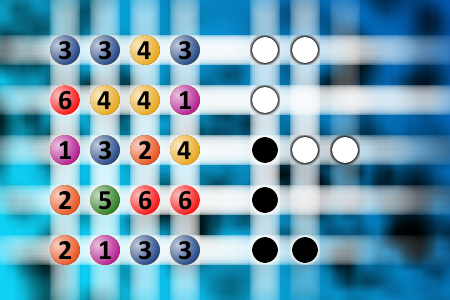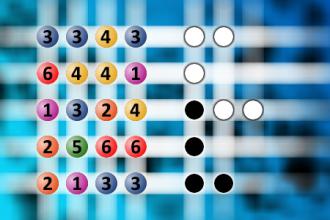What a winning combination?
The computer chose a secret code (sequence of 4 digits from 1 to 6). Your goal is to find that code. Black circles indicate the number of hits on the right spot. White circles indicate the number of hits on the wrong spot.Correct answers: 0
#brainteasers #mastermind

Not speaking...
Following an especially angry argument, Mr. and Mrs. Smith went to bed not speaking to each other. Needing to arise early the following morning, Mr. Smith left a note on his wife's bedside table that said "Wake me at six."
An exasperated Mr. Smith awoke at ten the following morning and rolled stiffly out of bed to see a note on his bedside table: "It's six, you bum! Get out of bed!"

